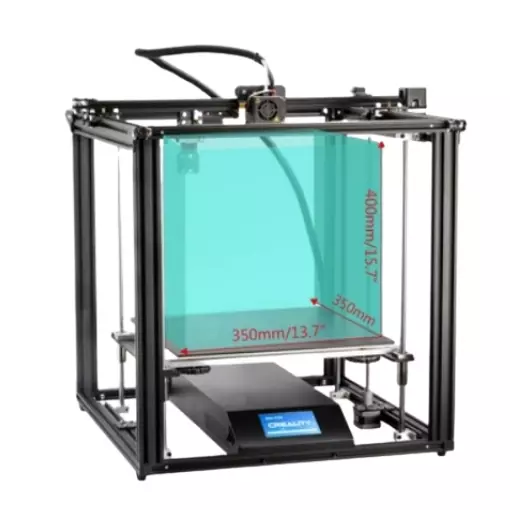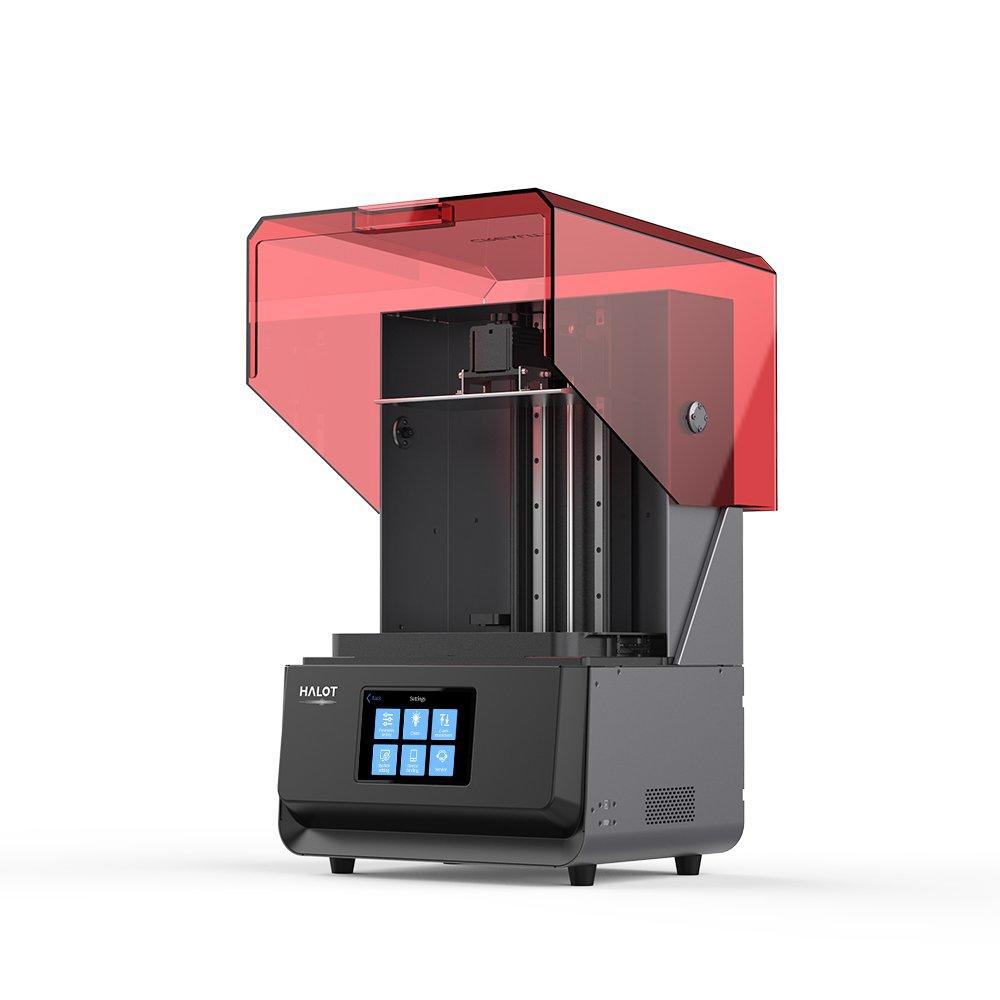Compare Ender 5 Plus vs Ender 3 S1 vs Halot Max
Comparison between the best 3D printers
Choose the best 3D printer at the best price. The cheapest 3D printers are here.
Buy a 3D printer here with 3D Fila.
 |
 |
 |
|
| Model | Ender 5 Plus[BUY Ender 5 Plus] |
Ender 3 S1[BUY Ender 3 S1] |
Halot Max[BUY Halot Max] |
| Printing Material | Filament | Filament | Resin |
| Estimated price | $599,00 | $399,00 | $3000,00 |
| Fabricante | Creality 3D | Creality 3D | Creality 3D |
| Release Year | 2019 | 2021 | 2021 |
| Print Volume [mm] | 350x350x400 | 220x220x270 | 293x165x300 |
| Printer Size [mm] | 632x619x666 | 455x490x625 | 480x387x770 |
| Weight [kg] | 18,2 | 9,1 | 32,5 |
| Power Loss Recovery | YES | YES | NO |
| Maximum Resolution [mm] | 0,1 | 0,05 | 0,03 |
| Processor | 32 bits | ||
| Display | Touchscreen TFT 4,3'' | Display 4,3'' | Display touchscreen 5'' |
| Power Supply | 24V / 504W | ||
| Connectivity | SD / USB | SD / USB | SD / USB / Wi-Fi |
| Operating systems | Windows, Mac, Linux | Windows, Mac, Linux | Windows, Mac, Linux |
| Date of registration in the system | 2021-04-14 | 2023-03-28 | 2022-11-04 |
| Release date | 2019 | 2021 | 2021 |
| Extra features | The Ender 5 Plus offers a large print volume (350x350x400 mm) and fast assembly. It includes a BLTouch sensor, but with range limitations. It stands out for its dimensional accuracy, although it requires adjustments to the slicer settings. Despite the noise, its integrated design saves space, and includes features such as a filament sensor and power resumption. Ideal for large projects, it requires refinement in the settings for high-quality prints. | The Creality Ender 3 S1 printer stands out for its easy assembly and quiet operation. It has automatic bed leveling and a direct drive system, providing high-quality prints. The design is sleek, with flat cables in mesh sleeves and a magnetic bed. The Creality Sprite extruder is lightweight and developed in-house, supporting a maximum nozzle temperature of 260 degrees. It includes a filament run-out sensor and power loss recovery, with a dual Z-axis for greater support and stability. The build plate is flexible steel with PC coating, and the printer supports a wide variety of filaments. | The Halot Max printer stands out for its large print size (293 x 165 x 300 mm) and uses SLA technology. It has an integral light source for improved accuracy and a strong core with an advanced operating system. Its Z-axis module ensures high precision, supported by efficient slicing software. The machine offers online OTA updates and boasts an adjustable layer thickness between 10 and 200 microns. Its XY-axis resolution is 3840*2160, with 0.05 mm accuracy, and an integral 405nm light source. The printer includes a 5" touchscreen and multiple connectivity options, such as USB, Creality Cloud, and HALOT BOX WiFi. With cutting-edge technology, the Halot Max is ideal for printing small models with uniform precision, thanks to its self-developed lighting system and stable printing mechanism, which includes dual linear guides, ball screws, and an intelligent brake system. |
| Support for multiple colors and materials (AMS and CFS) | NO | NO | NO |
Notes * |
|||
| Cost-benefit | 6 / 10 | 7 / 10 | 5 / 10 |
| Hardware | 2 / 10 | 2.4 / 10 | 1.2 / 10 |
| Screen | . | . | . |
| Print volume | 4 / 10 | 3 / 10 | 3 / 10 |
| Performance | 1 / 10 | 1 / 10 | 9 / 10 |
| [BUY Ender 5 Plus] | [BUY Ender 3 S1] | [BUY Halot Max] |
Conclusion |
| In comparing the Ender 5 Plus, Ender 3 S1, and Halot Max, several factors stand out that can help you make an informed decision regarding which 3D printer might best suit your needs. **Ender 5 Plus** offers the largest print volume and is best suited for larger projects that require dimensional accuracy. Its robust built makes it easy to assemble, and features like power loss recovery and a filament sensor enhance usability. However, it does have some noise issues and requires refinement in slicer settings to yield high-quality prints. While it has a good cost-benefit ratio, its weight and size might be considerations for users with limited space. The **Ender 3 S1** strikes a balance between functionality and affordability. It features automatic bed leveling, a union of a sleek design with quiet operation, and the flexibility to print with different materials. The quality of prints is commendable, and it also offers a good range of features, making it an excellent choice for hobbyists and those who value ease of use. Its cost-benefit score suggests it offers solid reliability without a hefty price tag. Lastly, the **Halot Max**, although the most expensive of the three, brings the latest SLA technology into play, providing exceptional precision and features such as a high-resolution touchscreen and multiple connectivity options, including Wi-Fi. Its advanced capabilities suit it for printing intricate models, but it may not be the most cost-effective choice for casual users or those primarily focused on larger prints. In summary, if you prioritize a large print volume for bigger projects, the Ender 5 Plus is a strong contender, albeit with minor drawbacks. The Ender 3 S1 provides the best balance of price and performance for general printing needs, making it ideal for hobbyists and beginners alike. For those seeking the highest accuracy and advanced technology for detailed projects, the Halot Max is unmatched, even if it comes at a premium. When making a decision, consider your specific printing needs, space limitations, and budget to select the most suitable 3D printer. |

